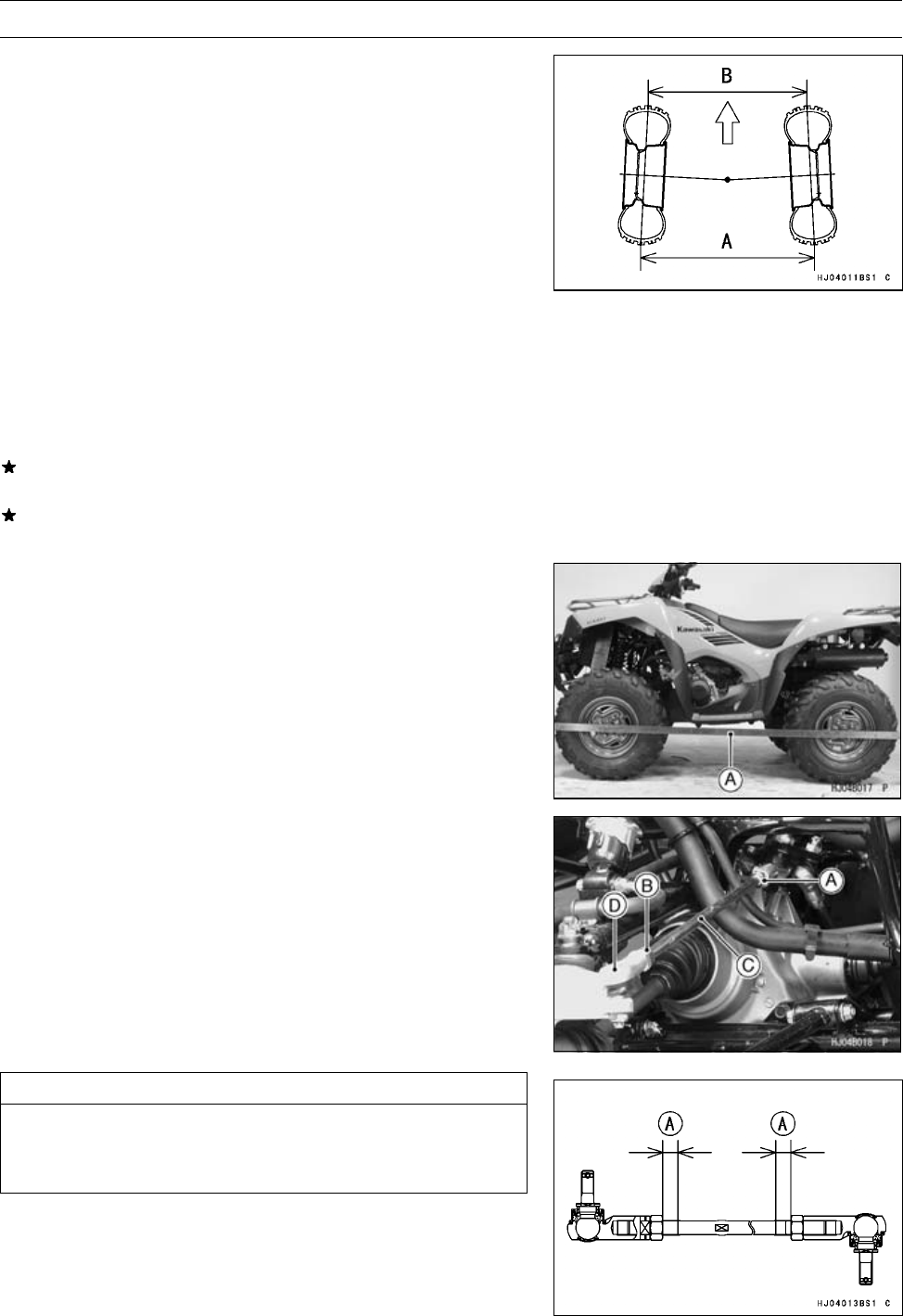
11-6 WHEELS/TIRES
Wheel Alignment
Toe-in is the am ount that the front wheels are closer to-
gether in front than at the rear at the axle height. When
there is toe-in, the distance A (Rear) is the greater than B
(Front) as shown.
The purpose of toe-in is to prevent the front wheels from
getting out of parallel at any time, and to prevent any slip-
ping or scuffing action between the tires and the ground. If
toe-in is incorrect, the front wheels will be dragged along
the ground, scuffing and wearing the tread knobs.
Caster and camber are build-in and require no adjust-
ment.
A(Rear)-B(Front)=Amount of Toe-in
(Distance A and B are measured at axle height with the
vehicle sitting on the ground, or at 1G.)
Steering Centering Inspection
•
Test ride the vehicle.
If the handlebar is straight when the vehicle is traveling in
a straight line, go on to the Toe-in Inspection procedure.
Otherwise, go on to the Steering Centering Adjustment
procedure.
Steering Centering Adjustment
•
Hold a straightedge [A] against the rear wheel rim on one
side at axle height.
•
With the handlebar straight ahead, loosen the locknuts
[A] [B] and turn the tie-rod [C] until the front wheel on that
side is parallel to the straightedge.
NOTE
○
The locknut [B] near the L mark [D] on the tie-rod has
left-hand threads. Turn the wrench clockwise for loos-
ening.
CAUTION
Adjust the tie-rod so that the visible thread length
[A] is even on both ends of the tie-rod, or the
threads could be damaged.


















